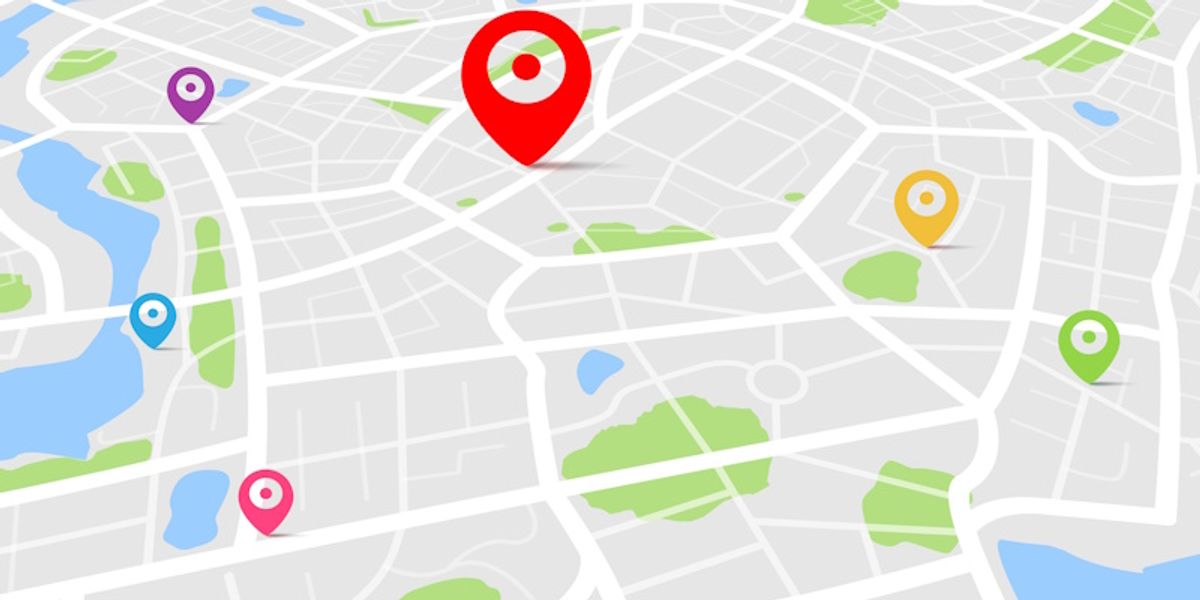Maps have always been integral to travel, particularly travel of the adventurous kind. Yet even with all the vast databases, search functionality and the bells and whistles of 3D, today’s travel mapping platforms still struggle to become the logical place for travelers to plan their journeys.
Google Maps is the market leader in general mapping. The company says the platform powers more than five million mobile apps and websites and has more than a billion monthly users. The figures may actually be double that. Despite forays into the world of hotel and flight search, Google seems happy to distance itself from fulfillment, handing clicks over to partners willing to pay to service them.
Mobility as a service provider Moovit claims 1.5 billion users, yet this is not trip planning in the Google sense. The platform, founded in 2012, has built this impressive user based on travel planning within 3,500 cities worldwide. Yet it has wider ambitions and in 2024 added the ability to plan travel between regions within the same country and time zone, which it says is “especially useful for vacation planning.”
Subscribe to our newsletter below
Meanwhile, Apple surprised many this year with the beta launch of Apple Maps on the web, 12 years on from its launch on iOS. On the web it offers the usual cocktail of driving and walking directions, photos, ratings and reviews as well as curated guides to discover places to eat, shop and explore in cities around the world. The company will be hoping to enlarge its user base of 500 million monthly users through the extension to web search.
Piggybacking off Google
Travel tech startups continue to be interested in mapping although many choose to piggyback on Google Maps rather than reinventing the wheel. Wanderlog’s drag-and-drop trip and budget planner lets you easily build a vacation itinerary and custom Google Map from a list of suggested attractions and lodging content from Google and Airbnb.
BluePlanit’s Travel Mapper, meanwhile, lets you build an itinerary in Google Sheets to generate a Google Map itinerary. London-based Citymapper has carved out a good share of travel mapping and mobility as a service, with more than 50 million users, an audience built without spending huge sums on marketing thanks to a laser focus on user experience that has seen it win app of the year for five years in a row. Like Moovit, Citymapper is focused on trip planning within, rather than between, cities.
Germany’s Textomap allows users, such as travel influencers and hotel properties, to generate saveable maps automatically from a block of input text or direct from a ChatGPT prompt (for example “Create the perfect trip for a family to Paris”). The generated maps can be embedded on websites or exported to Google Maps.
Joshua Kaufman is co-founder of user-generated social mapping platform Atly, which pulled in $18 million in funding in 2023. He said: “Mapping feels like one of the only technologies where it seems like it’s gotten better, but it has not. If I want to go find a place to read a book and drink coffee, give me 20 minutes and go and get a PhD.”
The problem, believes Kaufman, is that many mapping platforms are built on legacy concepts, such as star ratings, that are of limited value because they condense valuable information into a single score.
Natural language search and maps
“Getting one rating from someone on a scale from one to five was incredibly insightful when you had no information,” Kaufman said.
“Now we’re in a world where the average place in New York at least has 500 to 1000 reviews. Every additional review is literally meaningless. The future of mapping is going to be you don’t look for places, you just type in what you want – a coffee shop where I can bring my dog, a park where a lot of single people go.”
The future of mapping is going to be you don’t look for places, you just type in what you want – a coffee shop where I can bring my dog, a park where a lot of single people go.
Joshua Kaufman – Atly
Atly has built an algorithm called Placerank to solve the problem and has trialed its technology by building what Kaufman calls “the most robust gluten-free map in the entire world”. He said that Atly’s map has more places and is already more accurate than the previous market leader, which took 13 years and one and a half million contributors to compile.
Aaron Gowell, CEO of SaaS provider SilverRail Technologies agreed that “maps could be much more powerful than they are.” SilverRail recently inked a deal with Google to provide search and booking capabilities for rail on Google Maps.
Gowell said Google is dominant because of its standardized interface that people know well but there is room for improvement. He believes the problem is the disconnect between search and booking.
“My personal view is the killer app would be essentially Citymapper plus a platform underneath it where you could transact all the pieces and have them drop into a wallet,” he said.
“With transactions and augmented reality so that it becomes the kind of the tool that you navigate around by, this could become a real gamechanger.”
SilverRail has also been working on its own app called Vivi with a similar goal, but is quick to point out this is not a B2C play.
Gowell said adding AI in the mix will make mapping apps much smarter, by predicting when you are using it for commuting or leisure, for example, or suggesting a walk for the final mile of your journey on a sunny day.
“Overall, I think that generative AI is a natural step in the evolution of how users interact with commuter and mapping platforms, as it can offer personalized results and therefore enhance decision making with planning journeys or looking for points of interest,” said Ziv Kabaretti, Moovit’s vice president of product.
“That being said, I do believe we still have a ways to go with being able to fully depend on AI providing the most accurate and customized results. … By being able to voice questions such as ‘which subway station around me is wheelchair accessible?’” allows users to quickly receive results that are specific to their needs. In addition, quickly voicing a question or command can be an optimized experience for those that find tapping several buttons or having to navigate an app’s more particular features, more challenging and/or time consuming.”
3D in play
The big mapping platforms are betting on 3D. In May, Google announced that developers could now use Google’s own fast rendering of its photorealistic 3D maps and, in September, added fly-to and fly-around functionality to its 3D mapping allowing attractions, destinations and hotels to add guided tours easily to their websites.
San Francsico’s Niantic Labs, meanwhile, has launched a 3D rendering method called Gaussian splats that can create “fully immersive 3D models that are more accurate, more vibrant, and faster to render than previous technologies.” In recent years, Niantic has been quietly getting users of its hugely popular Pokémon GO app to scan places in the real world as part of its gameplay. Those scans now form the basis of its mapping platforms beyond games.
Atly’s Kaufman believes the rush into 3D is a dead end: “Those walkthroughs of a place with 3D renders are very cool but I haven’t used them once.”
Augmented reality may prove to be the tipping point. Google went too early with Google Glass but Meta’s collaboration with sunglasses-maker Ray Ban and the strides in AI, 3D and mapping could prove transformative. Maps may well prove to be the killer app, but they won’t look like any map you have yet seen.











